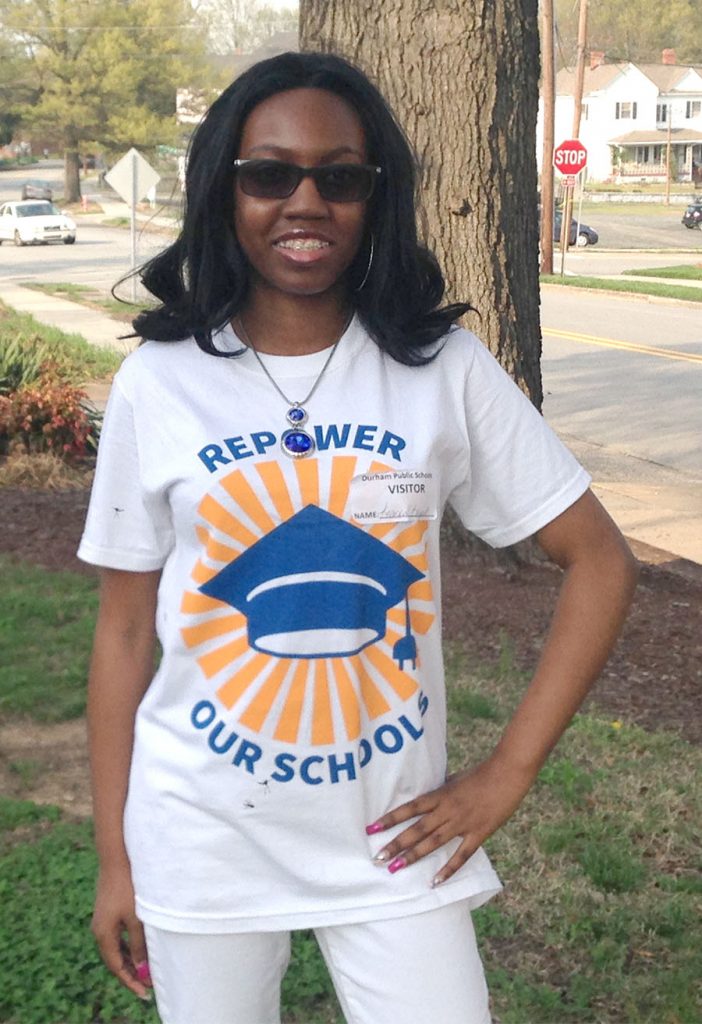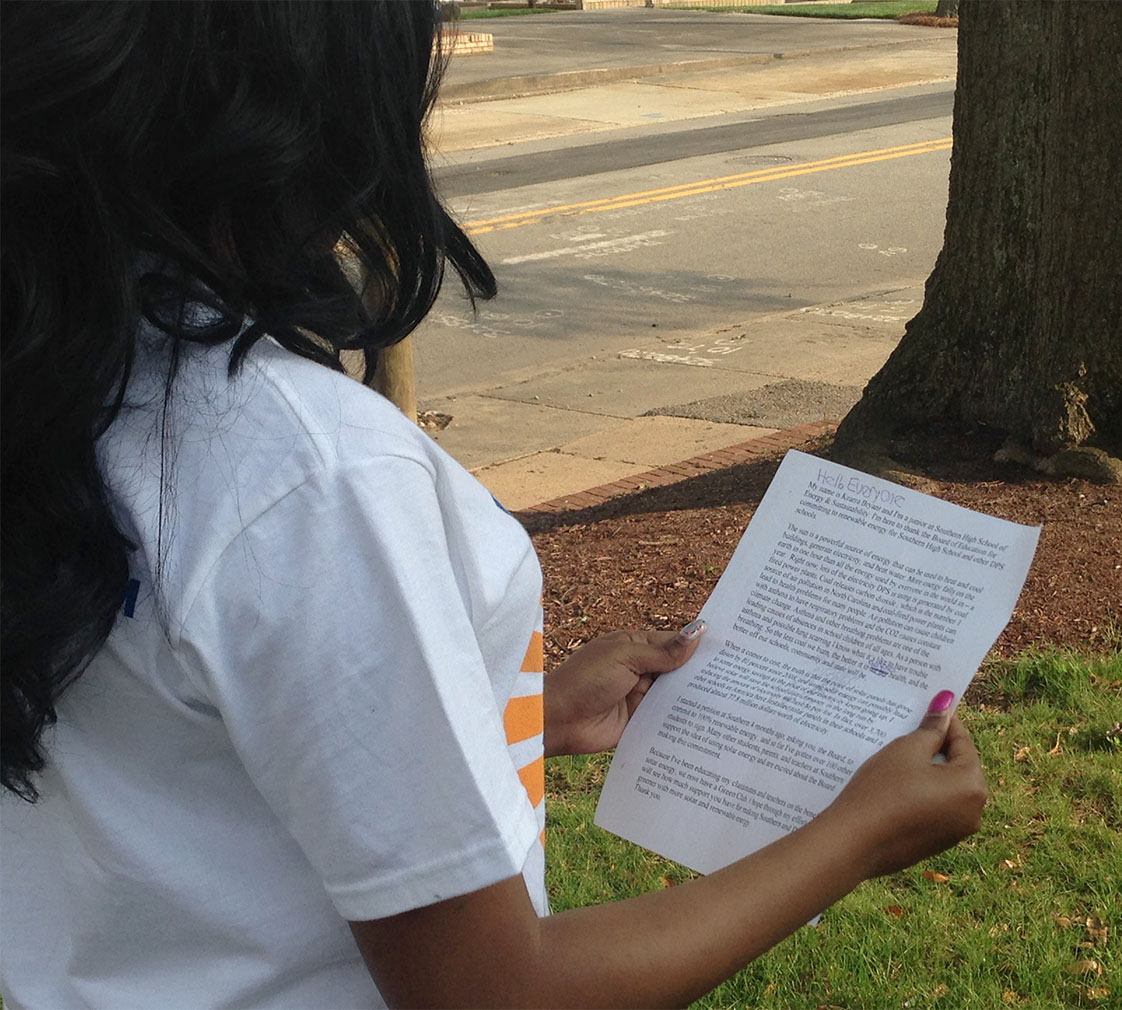
Southern High School Kearra Bryant holds up the Repower Our Schools banner with the other activists who joined her at the Board of Education meeting.
Southern High School student pleads her case for renewable energy
It’s nearly five o’clock on a warm April day. While her classmates are outside enjoying the weather, Southern High School junior Kearra Bryant is spending her afternoon indoors.
Today, April 9, is the Durham Public Schools Board of Education meeting, and Bryant has something to say.
“Over 3,700 other schools in America have installed solar panels in their schools, and it produces almost 77.8 million dollars’ worth of electricity,” Bryant said, while standing behind the podium addressing the dozen or so board members seated before her.
“I started a petition at Southern four months ago asking you, the board, to commit to 100 percent renewable energy, and so far I’ve gotten over 100 other students to sign.”
Bryant’s words were met with applause from both the board members and the 12 other activists she came with to the meeting. Bryant is a student member of the Repower Our Schools campaign, an initiative to get Durham Public Schools to commit to 100 percent renewable energy.
The board addressed the campaign while discussing a resolution to improve energy efficiency throughout the school system.
“It’s a very ambitious goal,” said Brian Callaway, coordinator of energy and sustainability at Durham Public Schools.

Kearra Bryant got involved with the Repower Our Schools campaign after meeting a Greenpeace activist at a job fair in the fall. “Greenpeace stood out to me at the job fair because they had candy,” she said with a smile. “And because I’m an animal lover and I think that goes hand-in-hand with the environment.”
Callaway pointed out a number of barriers to entry when it comes to installing solar panels in Durham schools.
“There is a structure in place currently that incentivizes private sector investment in solar by distributing tax benefits in forms that often times lead to covering 100 percent the cost of solar,” Callaway said.
“You see solar happening in North Carolina at a rapid rate but since Durham Public Schools is a non-tax paying entity, we are ineligible for those incentives so it makes it a cost prohibitive endeavor.”
The school board also brought up the potential multimillion dollar cost of replacing school roofing in order to make sure building infrastructure can support the physical weight of solar panels.
“We would really like for Durham Public Schools to become energy independent,” said at-large board member Leigh Bordley, “but yet the more I learn about the complexity of this issue, I struggle with how to bring this forward as a realistic concept.”
But the 13 activists at the meeting, all wearing matching white Repower Our Schools T-shirts, are well aware of how lofty their goal is.
“Our job is to be radical,” said campaign member Douglas Anderson, who teaches science at Shepard Magnet Middle School.
Though the board dismissed the idea of completely making the switch to solar panels in the near future, many board members stressed the importance for the school system to make larger strides to operate more efficiently.
“We want to go as far as we can possibly go. Because honestly, poor rural counties aren’t able to be leaders in this,” Bordley said.
“When I think of how fortunate we are to live in a county that embraces these goals, we have relatively generous capital budget and resources. We ought to be the leaders.”
The school board is expected to vote on a resolution supporting energy efficient and sustainable facility design at their next meeting on April 23. The resolution highlights the board’s goals to make major renovations in order to cut carbon emissions, which includes considerations for switching to solar power.
The board also announced the delivery of a report from North Carolina State University in early fall that will list specific expenses and actions required to switch Durham Public Schools to 100 percent renewable energy.
“Once we review this report we will have a better idea about meeting these loftier goals in the future,” Bordley said.
After the meeting, the 13 activists left the building and stood in a circle outside, each sharing one word to describe how they felt after hearing the board’s discussion.
Some said they were “impressed,” while others said they were “hopeful” and “inspired.”
“I feel excited,” Bryant said when it was her turn to share her word.
“I’m happy they are receptive.”
For a printer-friendly version of this story, click here.
